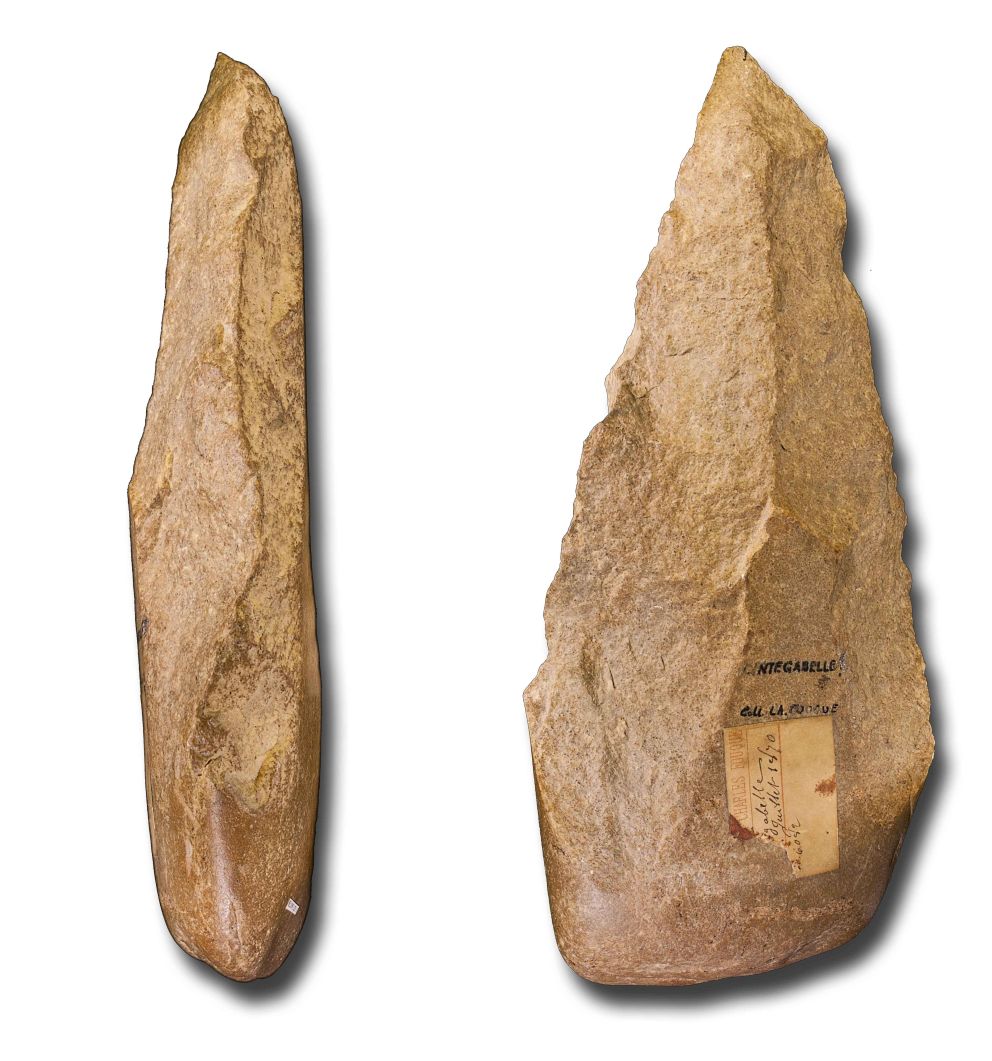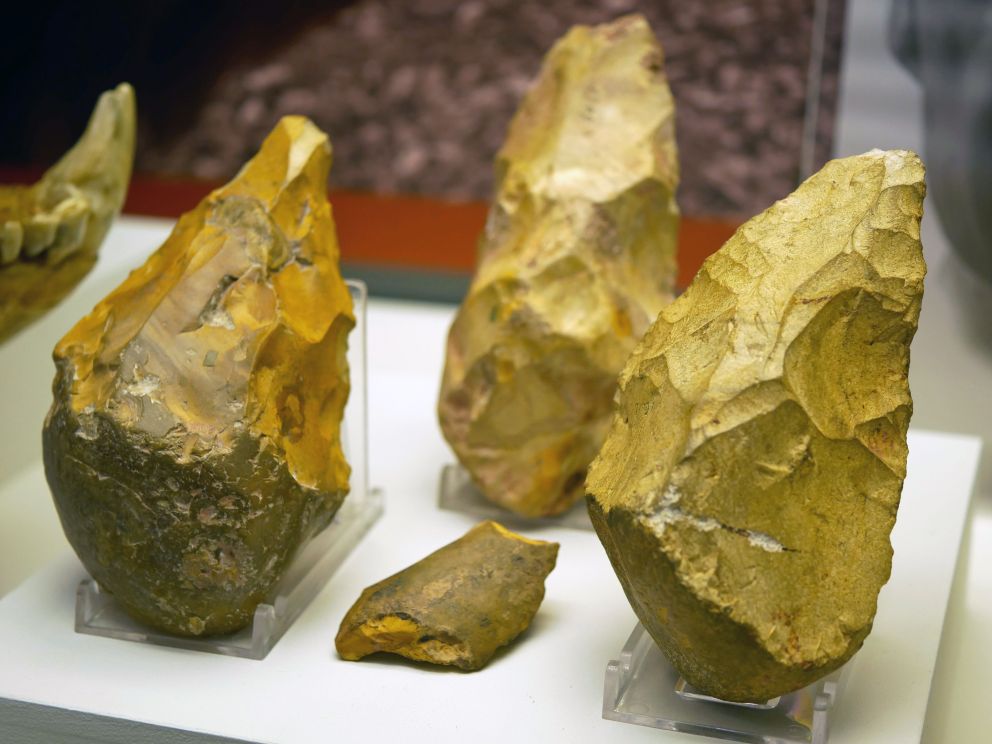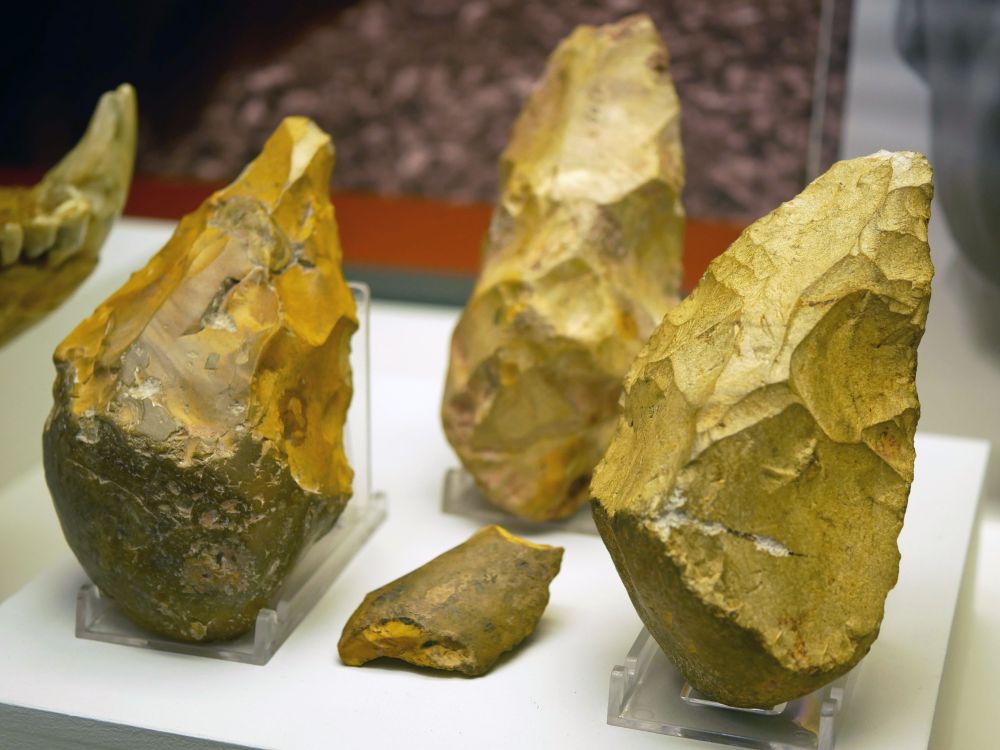Are these Britain's Oldest Handaxes?
The handaxe is the most emblematic early human stone tool, but they still lie beyond our complete understanding.
They first appeared in Africa around 1.7 million years ago and are found in Europe, the Indian subcontinent and China. In Britain they were in use just over 500,000 years ago and disappeared from use around 50,000 years ago.
These almond or teardrop-shaped tools were crafted by striking flakes from both sides of a stone cobble and are also known as bifaces for this reason. It would take years to learn the technique to create one but only 15-20 minutes to make one. They were essentially disposable, but sometimes kept and reused. Their form can be dictated by the raw material available to the maker but they were often replicated with remarkable consistency. The size of some examples appears to show they were not always just functional tools.
We know from experiments that they were excellent tools for butchering animals but they could also be used for shaping wood and perhaps other tasks. They may also have had a social function and been markers of cultural traditions but these aspects currently remain beyond our understanding.
Read More 


According to the research conducted by Callum Wilson, a visiting researcher from UCL in 2022, the answer is probably YES! Comparison with handaxes from other sites older than 450,000 years ago suggests our handaxes were made by a group in Britain around 600,000 years ago, meaning they reflect the earliest occupation of handaxe groups in Britain. The handaxes from Kents Cavern held by the Museum therefore date back to the first arrival of handaxe groups in Britain, and they provide a link to the wild, cold world inhabited by some of the earliest Britons.
You can see these on display in our Ancestors Gallery.
Read More 


Read More 

Support Torquay Museum
Did you know that whenever you buy anything online – from your weekly shop to your annual holiday – you could be raising free donations for Torquay Museum with easyfundraising? Find out how!
Stay Connected with Our Newsletter
Be the first to hear our latest news by signing up to our newsletter. Also don't forget to follow us on social media - @torquaymuseum.

















